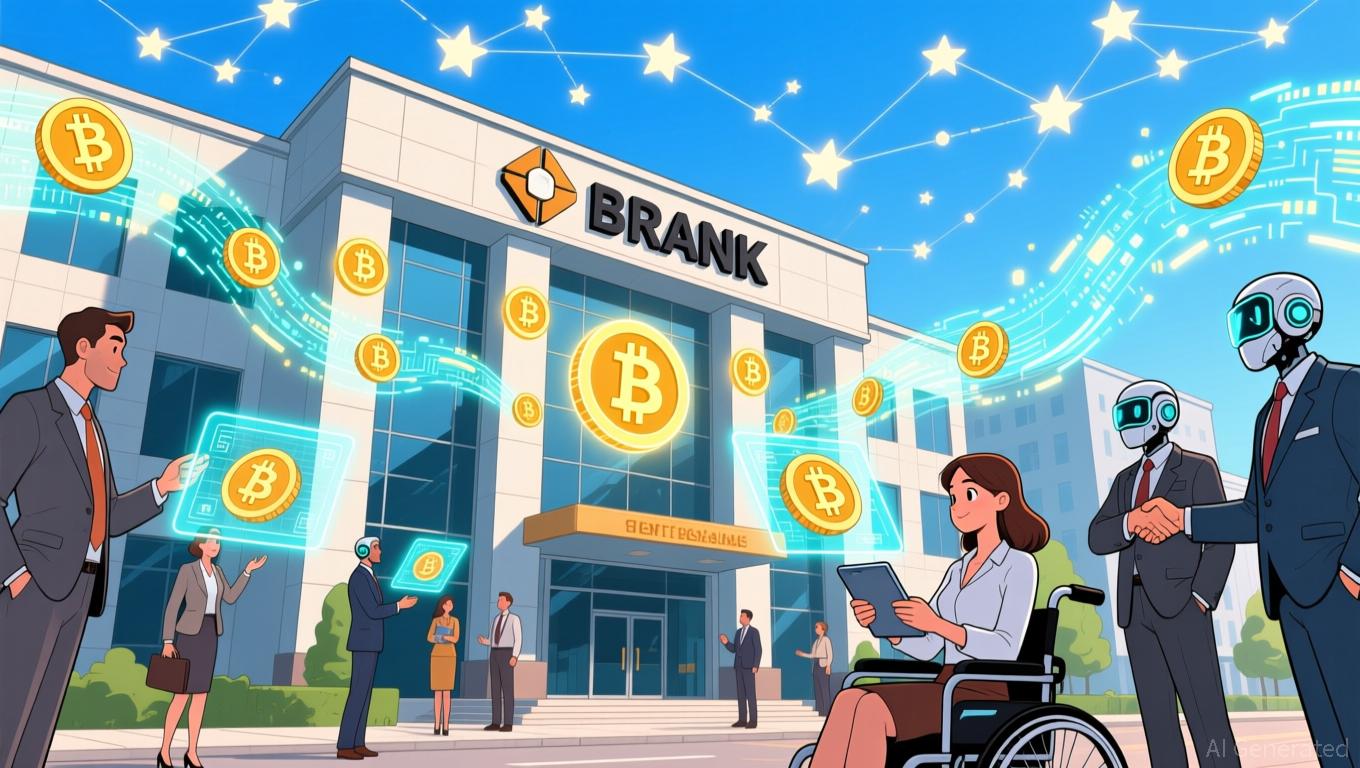Stablecoins Form the Core of Financial Infrastructure While Regulators Rush to Update Frameworks
- NY Fed consults Wall Street dealers on permanent repo facility to ensure liquidity backstop amid market uncertainties. - FSB prioritizes stablecoin regulation alignment and debt market monitoring as institutional adoption accelerates. - Fireblocks processes $1.5T in stablecoin transactions, driving blockchain integration into traditional banking systems. - Qualigen rebrands as AIxCrypto, shifting from biotech to Web3/AI, reflecting blockchain-AI convergence trends. - Former Fed Governor Kugler resigns ov
The New York Fed's recent discussions with Wall Street's primary dealers regarding its standing repo facility highlight shifting priorities in how monetary policy is carried out. President John Williams brought together representatives from 25 leading banks to gather their perspectives on the facility, which serves as a permanent option for institutions to obtain cash from the central bank by pledging top-tier assets such as Treasury securities.
On a global scale, regulators are increasingly focused on updating rules for stablecoins and private lending markets. The Financial Stability Board (FSB), which sets standards for G20 countries, has set out priorities for 2026 that include harmonizing stablecoin oversight and keeping a close watch on credit markets.

Elsewhere, changes in corporate identity are reflecting shifts in the market. After receiving shareholder approval, Qualigen Therapeutics will become AIxCrypto Holdings, Inc., moving from a biotech focus to a platform centered on AI and Web3.
Yet, ethical concerns continue to pose difficulties. Former Federal Reserve Governor Adriana Kugler stepped down after breaching trading regulations, including unauthorized trades by her spouse during restricted periods. Although previous disclosures and asset sales had been made,
Disclaimer: The content of this article solely reflects the author's opinion and does not represent the platform in any capacity. This article is not intended to serve as a reference for making investment decisions.
You may also like
JPMorgan Lowers Bullish's Price Target Following Removal of IPO One-Time Gains
- JPMorgan maintains "Neutral" rating for Bullish but lowers 2026 price target to $45, excluding $6.2M stablecoin promotion income from IPO proceeds. - Bullish's Q3 results exceeded estimates with $77M revenue and $29M adjusted EBITDA, though JPMorgan forecasts $37M annualized stablecoin revenue by 2027. - Analysts highlight Bitcoin/Ethereum volatility and NY BitLicense approval as potential catalysts for Bullish's trading volumes and institutional growth. - JPMorgan also facilitated $7.9B financing for CD


Ethereum News Update: Will DATs Endure or Pose a Systemic Threat? Crypto Market Faces Heightened Structural Challenge
- JPMorgan analysts link crypto market correction to $4B ETF outflows, exposing DAT firms' reliance on retail investors and index inclusion risks. - Strategy Inc. faces $2.8B potential losses if excluded from major indices, while BitMine's 0.86 mNAV ratio signals unsustainable debt-funded accumulation. - DeFi lending hits $73.6B as DATs struggle, with Aave dominating blockchain lending and Tether leading CeFi despite crypto price declines. - Market structure tests intensify as ETF outflows, staking yield d

Astar (ASTR) Price Rally: Examining How Solana’s Chain Migration Influences Network Performance and Token Value
- Solana's Q3 2025 chain migration intensified competition, prompting Astar to boost scalability and cross-chain solutions. - Astar achieved 150,000 TPS via zkEVM and Polkadot integration, with TVL rising to $2.38M despite DeFi outflows. - Strategic partnerships with Sony , Chainlink , and Animoca, plus $3.16M institutional investment, strengthened Astar's enterprise appeal. - ASTR price surged 1.95% in Q3 2025, reflecting market confidence in Astar's multichain positioning amid Solana's challenges.